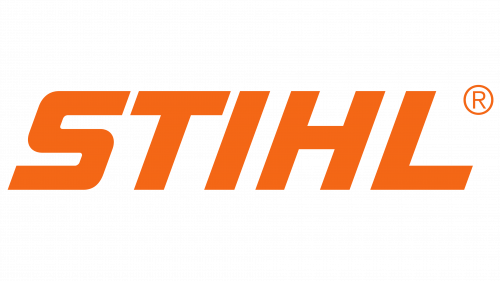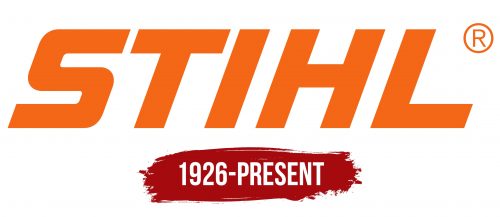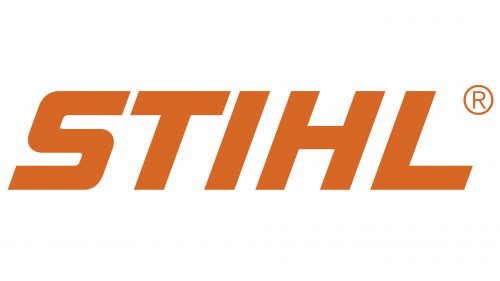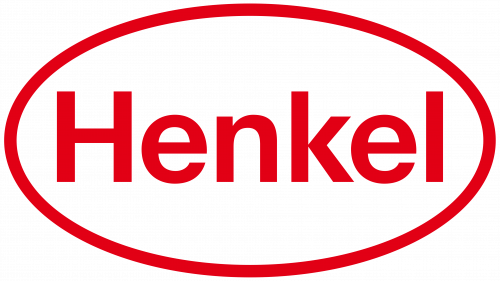The Stihl logo evokes a sense of power and strength, which is crucial for chainsaws, the product that marked the rise of the German power tool manufacturer. Its emblem is the epitome of reliability, something you can fully depend on to solve various household and professional challenges.
Stihl: Brand overview
In the German town of Bad Cannstatt, which is close to Stuttgart, the history of Stihl started in 1926. Engineer and inventor Andreas Stihl started the business because he thought there was potential in making better equipment for the forestry sector.
The first thing Andreas Stihl did in his profession was design and manufacture steam-powered washing machines. However, after seeing how labor-intensive the logging process was, he decided to concentrate on developing technologies that would make loggers’ jobs easier.
Andreas Stihl created and patented the first gasoline-powered chainsaw, known as the “Baumfällmaschine” (tree-felling machine) in 1929. This saw needed two persons to operate because it weighed roughly 48 kg. Even with its weight, it was a big advance over hand saws, and loggers immediately noticed it.
The brand’s chainsaws underwent development and enhancement during the 1930s. The corporation made efforts to make its tools lighter and more powerful. The 46-kilogram Type A model, which a single person could handle, was first released in 1931.
The first chainsaw with an electric motor was the BL model, which the company unveiled in 1938. This increased the number of places where the tools were used, particularly those with access to electricity.
World War II greatly damaged the company’s operations. Production was shifted to fulfill military demands, and many workers were enlisted in the military. Andreas Stihl started his firm almost entirely over after the war.
The 1950s were a time of great advancement for the brand. 1950, the business debuted the BLK model, the first single-person portable chainsaw. This variant was much more convenient because it weighed only 16 kg.
When the company unveiled the Contra model in 1959, it completely changed the industry. Despite only weighing 12 kg, this gasoline-powered chainsaw was more potent than its forerunners. The Contra set the stage for future expansion and was a major commercial success.
The 1960s and 1970s were marked by exponential growth and global expansion. In 1973, the business set up shop in Brazil as its first foreign production location. Trimmers and blowers were among the other gardening and forestry products added to the lineup.
Hans Peter Stihl, Andreas Stihl’s son, took over the company’s management in 1971. Under his direction, the business expanded and innovated.
Considerable advancements in technology were made throughout the 1980s. The Ematic technology, introduced in 1982, greatly decreased oil consumption and improved chain lubrication. The firm made its tools greener in 1987 by introducing catalytic converters for gasoline engines.
Throughout the 1990s, the company opened additional manufacturing facilities in China and the United States for its ongoing global expansion. Additionally, the business started to pay greater attention to the environmental effects of the engines it produced, making them cleaner and more efficient.
There was more invention in the 2000s. In 2002, the brand responded to the increased demand for eco-friendly tools by releasing its first chainsaw that ran on batteries. The MS 261 model, introduced in 2009, established new benchmarks for emissions reduction and fuel efficiency.
Advancements in battery technologies and the digitization of products defined the 2010s. The company unveiled several cutting-edge goods, such as smartphone apps that let users maximize the performance of their instruments and intelligent engine management systems.
The ground-breaking STIHL M-Tronic system, an electronic engine management system that automatically improves engine performance in various settings, was unveiled in 2011. This technology is installed in several professional chainsaws, greatly enhancing their effectiveness and performance.
The STIHL Compact Cordless System, a battery-operated tool range, was introduced in 2013. This series featured various lawn tools suitable for household use and only required one battery.
The firm unveiled several commemorative tool versions in 2016 to mark its 90th anniversary. That same year, to accommodate the increasing demand in the Asian market, the company opened a new factory in China, expanding its production.
In terms of digitization, 2018 was a big year for the brand. The company unveiled the STIHL linked system, which enables customers to utilize a mobile app to monitor their instruments’ functionality and technical state.
In 2019, the firm introduced the new STIHL AP System for professional use, carrying on the evolution of its battery-operated tool range. These tools have longer run times between charges and more power.
The company’s emphasis on sustainability distinguished 2020. The corporation launched several programs to lessen its influence on the environment, such as developing more energy-efficient engines and using recycled materials in manufacturing.
By launching a new range of robotic lawnmowers called STIHL iMOW in 2021, the brand increased its market share in the robotics industry. These devices included better navigation and smartphone control features.
In 2022, the introduction of the new STIHL MS 500i line of professional chainsaws with a cutting-edge fuel injection system made headlines. This technology greatly increased the tools’ power-to-weight ratio.
STIHL AP Pro is a new series of professional battery-powered tools announced in 2023. This series includes high-capacity lithium-ion batteries powered by powerful chainsaws, trimmers, and blowers. These instruments produced results on par with gasoline-powered counterparts but with far less vibration and noise.
For the brand, 2024 was the year of a significant advancement toward sustainability. The business started a project to make tools out of recyclable materials. A unique line of garden tools with 80% recycled plastic bodies was unveiled as part of this program.
With the release of the revised STIHL-linked system, the corporation increased its market share in the digital technology sector. For business users, the new platform featured improved tool fleet management features like predictive maintenance and workflow optimization.
Meaning and History
What is Stihl?
It is a German company known for manufacturing outdoor equipment. Andreas Stihl founded the company and manufactures various products, including chainsaws, trimmers, blowers, hedge trimmers, and high-pressure washers. The company is known for designs that make its equipment popular among forestry, landscaping, agriculture professionals, and homeowners. The brand emphasizes safety by consistently delivering advanced and reliable tools for various outdoor tasks.
1926 – today
This is how the Stihl emblem is perceived as simple, clear, informative, and powerful. It reflects a spectrum of emotions and factors demonstrating the company’s approach to production, product range, and uniqueness. The logo is crafted in a purely German style—businesslike, strict, and practical. This means it lacks flourishes, decorative elements, multiple components, and historical echoes—instead, it is dominated by brevity, restraint, and modernity.
The national character is expressed in the logo through minimalism. This approach is typical of Germans, reflecting their practical thinking and business acumen without a trace of sentimentality. Precise, clear, and to the point—these are the three principles of German branding. The straightforward representation of the name became an ideal option, fitting easily into this concept.
However, the designers infused the emblem with additional meanings using just the font. It conveys:
- The reliability of the products (expressed through large, stable monolithic glyphs);
- The safety of the products (represented by minimal inter-character spacing, making the text impregnable);
- Ease of use of the equipment (conveyed through ample intra-letter space, lightening the logo);
- Joy from purchasing and using the tools (symbolized by orange—the color of happiness, pleasure, warmth, and energy);
- High technical specifications of the devices (manifested in the italic text, adding a sense of movement to the emblem).
In this way, the company’s founders achieved an optimal balance between the appearance and the inherent meaning of the individual symbol, concentrating on key ideas. Additionally, such a logo easily marks products, unifying them under a common name. The text is smooth, short, and simple, fitting easily even on the handle of a handheld power tool.
At the same time, the bold letters do not wear out, maintaining readability for a long time. They have smooth edges, neatly cut ends, and enhanced monolithic quality. There is also a rightward tilt, indicating the manufacturer’s intention to surge ahead and become the sole leader in the industry. The italic style also signifies determination, dynamism, and energy. The only rounded element is the “S.” The letter features a smooth transition from the upper to the lower level and sloping protrusions, adding softness to the emblem and demonstrating the brand’s loyalty to its customers.






